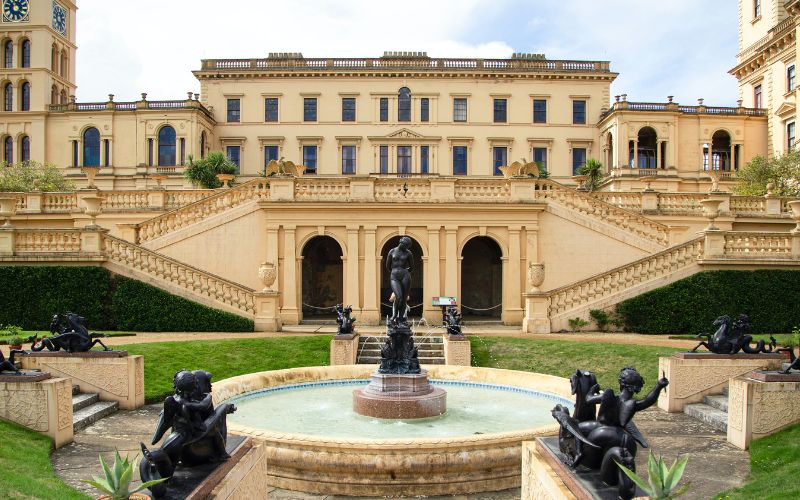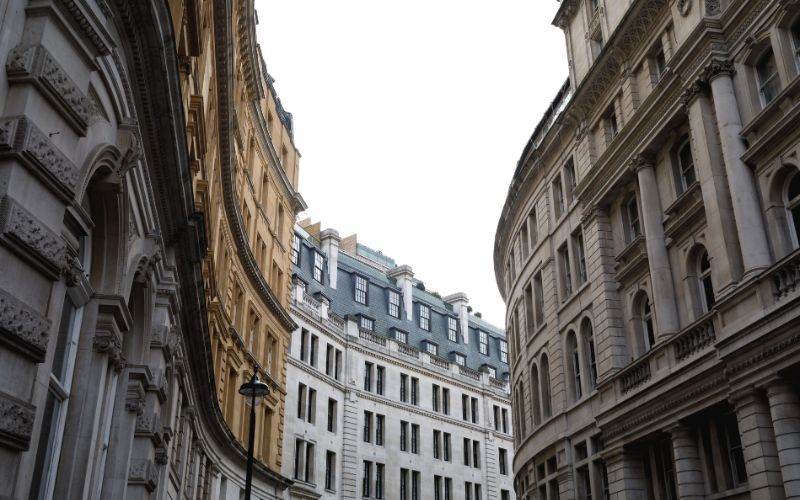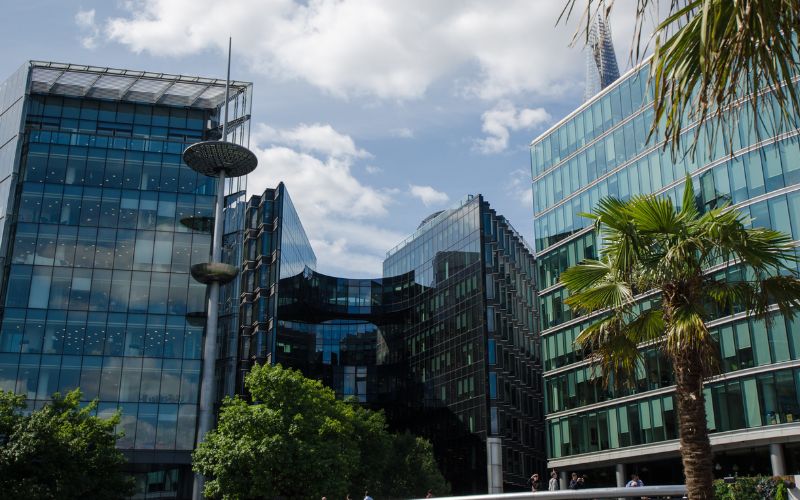Osborne House, Isle of Wight, constructed in 1845
Starting with the most recently constructed historical building on this list, Osbourne House is located in East Cowes, Isle of Wight, and was one of Queen Victoria’s favourite properties.
The estate was owned by the Blachford family from 1705 until 1845, when Queen Victoria and Prince Albert decided to buy the property as their seaside retreat on the recommendation of then Prime Minister Sir Robert Peel.
However, a number of extension and upgrade works were needed to accommodate the ever-growing royal family, and Prince Albert set out to make it his passion project.
Worried he might be restricted by the Department for Woods and Forests, Prince Albert avoided the Government’s architects and instead appointed Thomas Cubitt – a renowned developer of the Victorian era.
Cubitt advised that rather than carry out further upgrade works, it would be more cost effective to design and build a new one from scratch.
The property was completely demolished in 1848 with construction of the new build completed in 1851. Over time, additions were made to the estate including cottages, lodges, and a sea wall, until the estate became as we know it today.
The last time a member of the royal family visited Osborne House was in 2018 when the Queen Consort accompanied Dame Judi Dench on a tour of the estate, following the release of her new film ‘Victoria and Abdul’.

Clarence House, London, constructed in 1825
Just a short walk away from Buckingham Palace, you can find the ever-elegant Clarence House, proudly poised along The Mall.
The development of Clarence House was commissioned by Prince William Henry, Duke of Clarence and later King William IV. The four-storey dwelling is attached to St James’ Palace and is rumoured to have been commissioned because the prince believed the palace was too cramped.
The prince worked closely with renowned architect John Nash, who had also worked on the construction of Buckingham Palace and Marble Arch, on the design and development of Clarence House.
King William IV lived there until his death, after which the property was passed down through a number of royal relatives including Queen Victoria. Leading up to the second world war, the Duke of Connaught resided at Clarence House.
However, part of the building was destroyed during the Blitz and following the Duke’s death in 1942, the house was used by St John’s Ambulance Brigade and the Red Cross until the end of the war.
The house was refurbished and became home to Princess Elizabeth and Prince Philip, and is the birthplace of Princess Anne. Elizabeth and her family lived there until she became Queen in 1952.
A number of alterations have been made over the two centuries since the property was developed, reflecting the residents of it’s time, with soon-to-be King Charles the property’s latest occupier.

Image: thecrownchronicles.co.uk
Highgrove House, Gloucestershire, constructed in 1796
Nestled in the countryside of Gloucestershire, Highgrove House was designed during the reign of King George III and developed by architect, Anthony Keck, between 1796 and 1798.
However, Keck’s build was short lived as a fire tore through the property in 1893 causing significant structural damage. Under Queen Victoria’s reign, Highgrove House was restored to it’s former glory by Bristol architect John Hart.
Since then, the property has been home to a number of residents including Maurice Macmillan, son of former Prime Minister Harold Macmillan, until the estate was bought by the Duchy of Cornwall in 1980.
Highgrove House has since been King Charles’ preferred residence, having remodelled a lot of the property himself using neo-classical architectural designs, with the surrounding gardens maintained by his environmental beliefs.

Image: Country Life
Curious about the properties we’ve worked on? Browse our case studies here. If you’ve gotten this far, keep an eye out for part two of our coronation series special.
How can we help?
Our team of Chartered Building Surveyors are working closely with property owners, lenders, and estate agents across London and the South Coast to proactively navigate a changing horizon. From ensuring new builds and conversions are delivered on time and in budget, to delivering EPC and MEES upgrades on behalf of landlords.
Read more about our solutions here:
Technical due diligence
Project management
Dilapidations consulting
Cost management
Monitoring Surveying
Party Wall
Contract Administration
Planned Preventative Maintenance
Alternatively, email us at enquiries@sillencehurn.co.uk or call our Southampton team on 02380 014786 or London at 020 3143 2128




